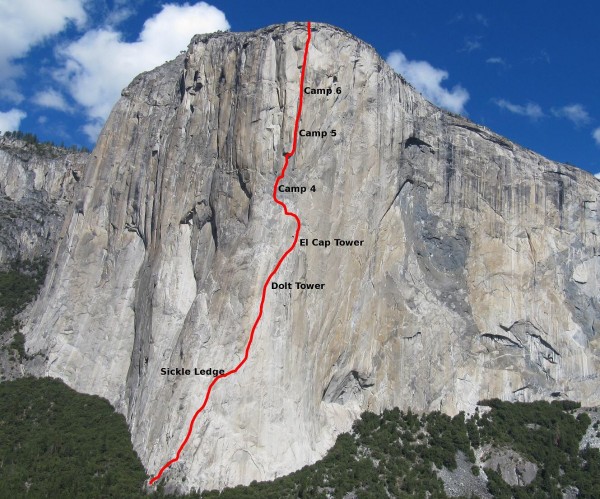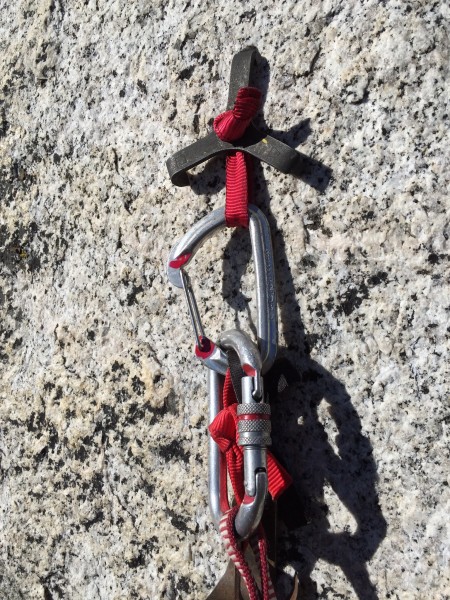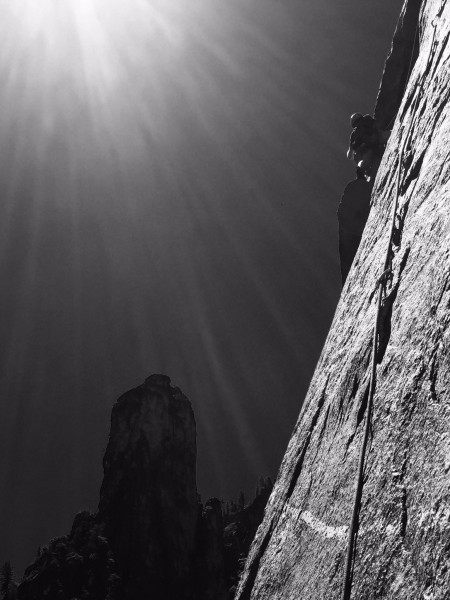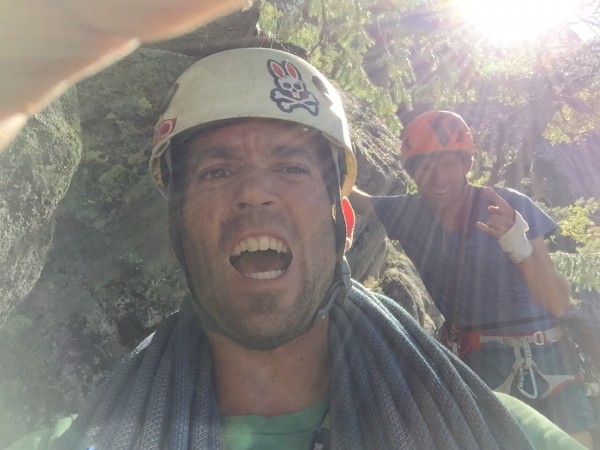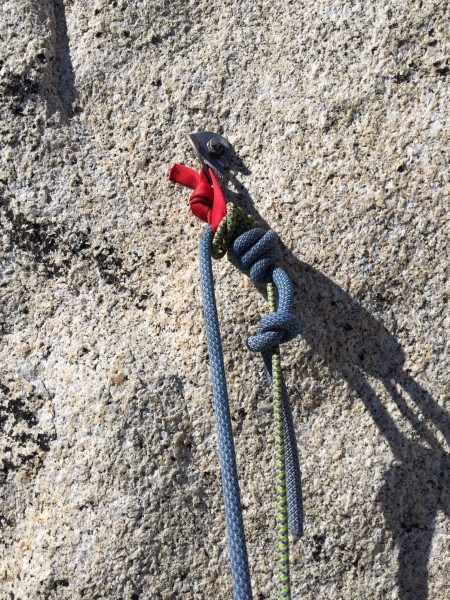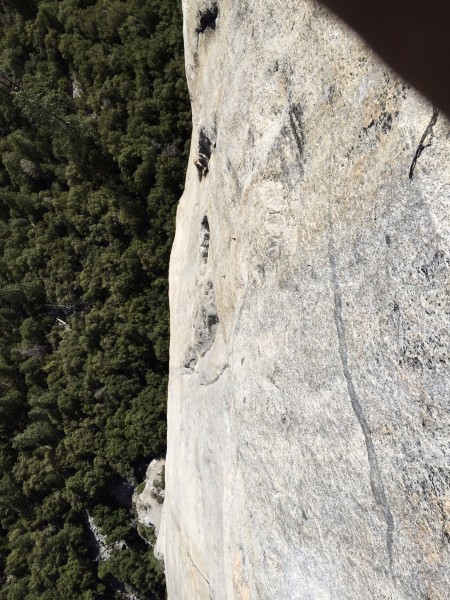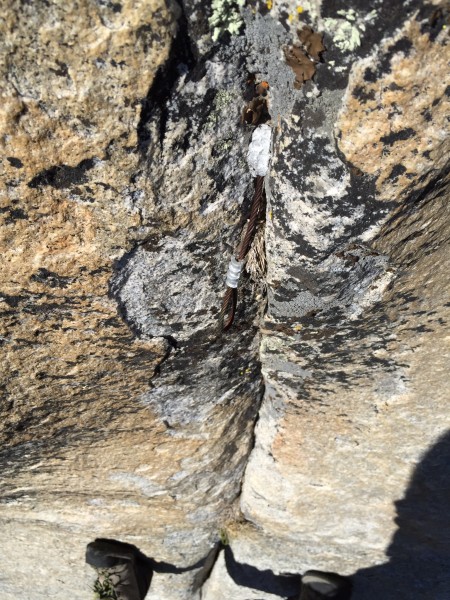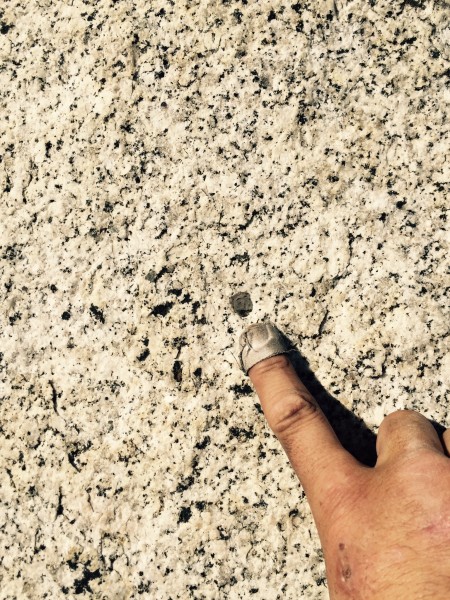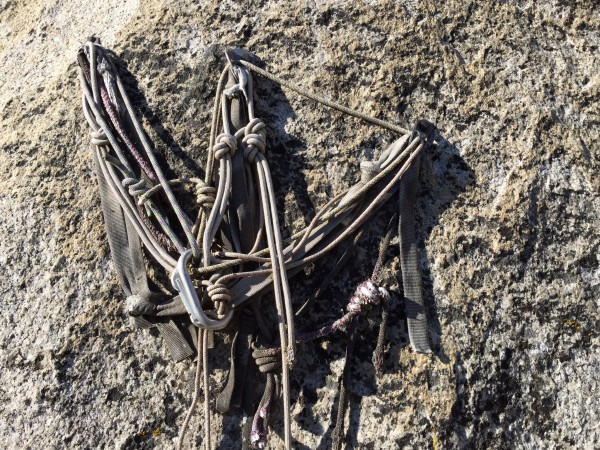Scottie Burk and Tucker Tech gave me some of the back story on the route. When the 3 Gallegos brothers came to town in 1981 Mediterraneo was the first time an FA had been put up on El Cap by an all foreign team. That, along with their use of fixed ropes on the bottom half of the route, made them the target of much slander amongst the locals. Rumor had it that the Gallegos brothers took offense to the hostile hardmen and chopped several of their own bolts on the lower slabs. The Basque Bad Boys were also reported to have used batheads (copperheads tapped into a bathook hole) instead of rivets on several sections.
Useful beta was scarce back then, but I was able to piece together a hand drawn topo from the El Cap route poster, Donnie Reid's free climbing guide and my mom's giant binoculars. Scottie had also informed me that the route had recently seen a second ascent (by Ken Bokelund and Kevin Andrews) so at least the issue of the chopped bolts seemed to have been resolved.
In late July of 2002 I stood at the base with 300+ pounds of gear ready to head up into the unknown. Three days later I was starting up the fifth pitch when I got about 30' up and couldn't figure out the next move that would get me to one of the funky little Basque bolts (turns out the bolt chopping rumor was false). I stood there for a long while trying to find a hook from my top steps, wondering if this if this was one of the 5.11 sections and having an internal debate before retreating back to the anchor and grabbing the drill.
I reached the Basque bolt and continued plugging away at the long (and unknown to me at the time A4 rated) pitch. Only two moves away from the anchor on Triangle Ledge, Karma decided to have her way with me when the micro flake I was hooking time-bombed and sent me for a 45' sliding whipper that mangled my fingers on the way down. I managed to finish the pitch and rap back down to my bags.
At the lower anchor, the cumulative factors of the horrendous slab hauling, oppressive heat, gnawing fear, and the sense of self loathing for having drilled on someone else's route all pressed down on me and it wasn't long before I was digging through my haulbags. My dreams of solo bigwall glory were pissed away one water bottle at a time until there were only 2 liters left. I cleaned the pitch and rapped back down to my bags and made four more raps back down to the ground. Once I got down, I cracked open a warm King Cobra that tasted a lot like defeat and ferried my gear back to the truck.
My friends tried to assure me that no one ever climbs that damned route and I shouldn't beat myself up about the bathook hole, but it has always bothered me. Finally, 12 years later I found myself back in the Valley for a week of climbing with one of my favorite partners.
After Mike went home I still had a day to kill, so I jugged up the fixed lines to Mammoth with some epoxy, some flecks of granite and a syringe plunger minus the needle.
I rapped down to Triangle Ledge and then started down Mediterraneo.
Halfway down the 5th pitch I found some evidence from the last time I'd been there.
Below the seam I slowed down and started searching until i found the source of my mental anguish.
It was time to bust out my patch kit and fix that thing.
Lower down I found an old anchor that I had used during my bail 12 years earlier and I even recognized one of the biners on it. I cut off all the manky tat and reached the ground shortly thereafter with two more biners on my rack and one less hole in the Captain than when I started.
Mediterraneo probably isn't going to become a popular route anytime soon, but I think climbing has one of the richest histories of any sport and I feel strongly about the importance of respecting that history.
